Molecular adaptations to multi-extreme conditions: interdisciplinary approaches to explore microbial ecosystems in the Danakil depression (Afar region, Ethiopia)
Supervision: Purificacion Lopez-Garcia and David Moreira
Host laboratory: “Microbial diversity, ecology and evolution” team (http://www.ese.u-psud.fr/rubrique7.html?lang=en), Unité Ecologie Systématique Evolution (ESE), CNRS UMR 8979, Université Paris-Sud/Paris-Saclay, bâtiment 360, 91400 Orsay (France)
To apply and/or to obtain more details, please contact: puri.lopez@u-psud.fr / +33 (0)1 69 15 76 08
State of the art
The last decades of the twentieth century witnessed an extraordinary research activity focusing on life « on the edge », leading to the isolation of many different microbial species that challenged previously known physico-chemical limits for life. Although extremophilic microorganisms had been known to thrive in apparently sterile environments for a long time (for instance, halophilic microbes had already been isolated from the salty Dead Sea in the 1930s1,2), the quest for extremophiles really took off after the discovery of bacteria living at high temperature in the acidic geothermal waters of the Yellowstone National Park3. Since then, many different organisms have been isolated that seemed to push life physico-chemical limits further. These include the fascinating hyperthermophilic microorganisms thriving at more than 80°C and up to 122°C in hot springs and deep-sea vents, but also organisms living at very low temperatures, in alkaline or acidic waters, hypersaline or desert conditions and metal-rich or highly irradiated environments4,5.
The interest of extremophilic microbes is twofold. First, they are wonders of molecular adaptation to physico-chemical conditions that would denature or prevent the activity of nucleic acids or proteins in the rest of cellular life. These molecular adaptations have biotechnological interest, since the enzymes of these organisms are active under a wide variety of conditions4,5. The second large interest of extremophilic organisms relates to biological evolution and the origin of life. The discovery of extremophiles was intimately linked to the discovery of the third domain of life, the archaea6, 7. Although archaea are known today to thrive also in non-extreme environments, such as soils or oceans, archaea do hold most extremophily records4,5. The discovery of extremophiles and archaea also had implications for the study on the origin of life on Earth and, potentially, elsewhere in the universe. Indeed, the discovery of extremophiles has led to reformulate the conditions for habitability8. Although still a subject of debate, several molecular phylogeny reconstructions suggest that the last common ancestor of extant organisms, prior to the diversification of contemporary bacteria, archaea or eukaryotes, was thermophilic, living at temperatures higher than 60-70°C9,10. Furthermore, it seems clear that the last common archaeal ancestor was a hyperthermophile whose descendants adapted secondarily and independently to mesophilic conditions, likely with the contribution of horizontal gene transfer11. Thermophilic ancestors would be compatible with the idea of an early Earth that was still hot after accretion and released its internal heat through active hydrothermal activity and where extreme environments were the norm12,13. In addition to the molecular evolutionary information derived from extant organisms, fossil signatures left by microorganisms is the other potential source of information about ancestral life on Earth. Unfortunately, the oldest fossil record is ambiguous and difficult to interpret, which has led to active debates about the interpretation of the oldest putative biogenic traces13-15. Consequently, linking microbial diversity to its traces in modern extreme environments that can serve as analogs of ancestral ecosystems is essential to help interpret the past fossil record.
One such potential modern analogs is the depression of Danakil at the Afar region in Ethiopia, which is one of the most unique and extreme environments on Earth. At the confluence of three tectonic plates in the East African rift (Triple Afar Junction), the Afar Depression is one of two places (together with Iceland) on Earth where a mid-ocean ridge can be studied on land16,17. The rifting activity (1-2 cm per year) results in high seismic and volcanic activity, which is often accompanied by the presence of many hydrothermal springs, notably at the Dallol mound. With an average daily temperature of 34°C, it is considered the hottest place on Earth. Over time, the seawater enclosed in the area as a result of tectonic activity evaporated, leaving extensive evaporite deposits that salt caravans have exploited during millennia, as well as hypersaline lakes, some of which also bear hydrothermal vents in a rare combination of extreme conditions (e.g. lake Afrera, lake Assalé). The site has been studied by geologists both for its importance for understanding plate tectonics and for the interest of its mineral resources16,17. However, despite its potential interest as reservoir for extremophile biodiversity and despite the paleontological interest of the general Afar area, which harbors some of the oldest hominid remains18, this site is essentially unstudied from the point of view of extremophilic microorganisms and their potential fossil traces.
Objectives
We propose an interdisciplinary research project at the boundary between biology and Earth sciences with the following major objectives:
1) To study microbial diversity in the multi-extreme environment of Danakil and to characterize new microbial lineages in the Tree of Life.
2) To understand life strategies to cope with multiple extreme conditions and get insights on the underlying molecular mechanisms for multi-extremophile adaptation.
3) To initiate studies of mineral-microbe interactions and to identify microbial fossil biosignatures in minerals that help interpret the ancient fossil record.
Research plan
To accomplish these objectives, we propose the following research plan.
Samples. To carry out this study, we have collected samples during an interdisciplinary expedition that we organized in January 2016 to the Danakil depression. Samples were collected at various extreme sites at or around Dallol, a proto-volcanic mound which contains active hot springs and acid ponds19, as well as the hypersaline lake Assalé, located a few kilometers to the South. Samples to be tested include i) highly acidic (pH -1.5 to 0), hypersaline (30-50%) and hydrothermal (Temp. 40-108°C) water and mineral precipitates at the Dallol mound, ii) acidic (pH 3) hypersaline (~30%) and hydrocarbon-rich waters and sediment of the Yellow Lake, iii) water and sediments around the Black Lake, iv) evaporite samples from the salt canyons, which may harbor endomicrobial communities and/or fossil biosignatures and v) water samples from lake Assalé (Figure). Samples were conditioned in a variety of ways. Small fractions of intact samples (few g or ml) were collected for microbial isolation attempts, low oxygen-containing samples were collected in sealed flasks to maintain anoxic conditions. Water samples were filtered through different pore-size filters to retain biomass of different size fractions (>200 µm, 30-200 µm, 0.2-30 µm) and then fixed in ethanol and RNA later for subsequent molecular analysis. Evaporite fragments were fixed in ethanol and RNA later for molecular studies and dried for microscopy and biosignature analyses. Sampling was documented in situ.

Various multi-expreme sampling sites at the Dallol mound and surroundings (Dallol 2016 expedition). From left to right, Dallol acidic and salty hot springs, salt (evaporite) canyons, Yellow Lake and Black Lake.
Isolation of extremophilic organisms. Attempts to cultivate and isolate new extremophilic organisms from the three domains of life (archaea, bacteria, and in moderate extreme sites, eukaryotes) will be carried out in the host laboratory (ESE, Université Paris-Sud, Orsay), but also in collaboration with K. Alain and S. L’Haridon (Université Bretagne Occidentale, Brest) and A. Lopez-Archilla (Universidad Autonoma de Madrid, Spain), which will also provide isolated strains from ongoing culturing efforts. Targeted organisms will be thermophilic, acidophilic and halophilic microorganisms living at high temperature (50 to >80°C), low pH (<0-3) and high salt. Isolates will be characterized by classical microbiology tools and by molecular identification (16/18S rRNA gene sequencing). Lineages occupying interesting positions in the tree of life will be selected for further study, including genome sequencing. In addition to archaea and bacteria, a particular interest will be devoted to microbial eukaryotes, which have been much less studied in extreme environments, although a few studies suggest that divergent lineages live in underexplored acid or moderately hot ecosystems20-22.
Microbial diversity, functional potential and molecular adaptations to multi-extreme conditions. DNA will be purified from a representative selection of the samples. Microbial diversity will be assessed by metabarcoding of 16S/18S rRNA genes. In addition, after quality check, purified DNA will be directly sequenced by high-throughput techniques (paired end Illumina HiSeq and/or MySeq) to generate metagenomes from the different samples. Metagenomes will be mined using a bioinformatic pipeline available at the host laboratory for i) phylogenetic marker genes (e.g. 16S/18S rRNA genes), which will be used to corroborate the diversity identified in these samples, and ii) functional genes, which will be used to describe the metabolic potential of these communities23, 24. Because a relatively low diversity is expected in such extreme environments, genome reconstruction of dominant microbes may be possible25, 26. This information will be enriched by sequencing the genomes of putative isolates. Genomic signatures of adaptation to extreme environments (GC content, amino acid use, codon usage), will be looked for 27. This information will be correlated with physico-chemical parameters and used to improve our understanding of the ecology and evolution of extremophilic microorganisms.
Microbe-mineral interactions and biosignature detection. In parallel to molecular analyses, preliminary analyses of interactions between microbes and their mineral environment (evaporites) will be explored by confocal scanning laser microscopy (CLSM) and scanning and transmission electron microscopy (SEM, TEM). Microfossils or the presence of biominerals associated to particular microbes or microbial communities28,29 will be looked for in collaboration with K. Benzerara (Institut de minéralogie, de physique des matériaux et de cosmochimie, Université Pierre et Marie Curie, MNHN, Paris).
Laboratory facilities and expertise
The PhD work will be essentially carried out under the supervision of P. Lopez-Garcia and D. Moreira in the “Microbial diversity, ecology and evolution” team (http://www.ese.u-psud.fr/rubrique7.html?lang=en) at the Unité Ecologie Systématique Evolution (ESE), CNRS UMR 8979, Université Paris-Sud/Paris-Saclay, Orsay (France). The host laboratory is perfectly equipped to carry out the required molecular work and also has the required bioinformatic, genomic and molecular phylogeny expertise. Our collaborators K. Alain and S. L’Haridon (Université de Bretagne Occidentale) have a long experience in culturing anaerobic hyperthermophiles, maintaining a culture collection particularly enriched in extremophilic archaea. They will host the PhD student for some weeks to provide training in these aspects. A. Lopez-Archilla (Universidad Autonoma de Madrid) has a wide experience in culturing aerobic extremophiles, notably from acidic sites. Having participated to the Dallol 2016 expedition, she will provide us with cultures in view of genome sequencing and analysis. K. Benzerara (Université Pierre et Marie Curie) is a long-term collaborator expert in mineralogy and biomineralization. High-resolution microscopy techniques will be carried out at his laboratory.
Some recent laboratory publications in relation with the proposal
López-García P, Zivanovic Y, Deschamps P & Moreira D (2015) Bacterial gene import and mesophilic adaptation in archaea. Nat Rev Microbiol, 13:447-456
Saghaï A, Zivanovic Y, Zeyen N, Moreira D, Benzerara K, Bertolino P, Ragon M, Tavera R, López-Archilla AI & López-García P (2015) Metagenome-based diversity analyses suggest a significant contribution of non-cyanobacterial lineages to carbonate precipitation in modern microbialites. Front Microbiol, 6: 797.
Benzerara K, Skouri-Panet F, Li J, Férard C, Gugger M, Laurent T, Couradeau E, Ragon M, Cosmidis J, Menguy N, Margaret-Olivera I, Tavera R, Lopez-Garcia P, Moreira D (2014) Intracellular Ca-carbonate biomineralization is widespread in cyanobacteria. Proc Natl Acad Sci USA 111: 10933-10938.
Barbieri, R., Cavalazzi, B., Stivaletta N. & López-García P. (2014) Silicified biota in high-altitude geothermally-influenced ignimbrites at El Tatio Geyser Field (Andean Cordillera, Chile), Geomicrobiol J, 31: 493–508
Amarouche-Yala S, Benouadah A, Bentabet AEO & López-García P (2014) Morphological and phylogenetic diversity of thermophilic cyanobacteria in Algerian hot springs. Extremophiles 18:1035–1047
Couradeau E., Benzerara K, Gérard K, Moreira D, Bernard S, Brown GE Jr. & López-García P (2012) An early-branching microbialite cyanobacterium forms intracellular carbonates. Science, 336: 459-462
Other references
- Volcani, B.E. Algae in the bed of the Dead Sea. Nature 145, 975-975 (1940).
- Volcani, B.E. Bacteria in the bottom sediments of the Dead Sea. Nature 152, 274-275 (1943).
- Brock, T.D. Life at high temperatures. Science 158, 1012-1019 (1967).
- Rothschild, L.J. & Mancinelli, R.L. Life in extreme environments. Nature 409, 1092-1101 (2001).
- López-García, P. in Lectures in Astrobiology (eds. Gargaud, M., Barbier, B., Martin, H. & Reisse, J.) 657-679 (Springer-Verlag, Heidelberg, 2005).
- Woese, C.R. & Fox, G.E. Phylogenetic structure of the prokaryotic domain: the primary kingdoms. Proc. Natl. Acad. Sci. USA 74, 5088-90 (1977).
- Woese, C.R., Kandler, O. & Wheelis, M.L. Towards a natural system of organisms: proposal for the domains Archaea, Bacteria, and Eucarya. Proc. Natl. Acad. Sci. USA 87, 4576-9 (1990).
- López-García, P. in Lectures in Astrobiology (eds. Gargaud, M., Martin, H. & Claeys, P.) 221-238 (Springer Verlag, Heidelberg, 2007).
- Gouy, M. & Chaussidon, M. Evolutionary biology: ancient bacteria liked it hot. Nature 451, 635-636 (2008).
- Akanuma, S. et al. Experimental evidence for the thermophilicity of ancestral life. Proc Natl Acad Sci U S A 110, 11067-11072 (2013).
- López-García, P., Zivanovic, Y., Deschamps, P. & Moreira, D. Bacterial gene import and mesophilic adaptation in archaea. Nat Rev Microbiol 13, 447-456 (2015).
- Nisbet, E.G. & Sleep, N.H. The habitat and nature of early life. Nature 409, 1083-1091 (2001).
- Gargaud, M., Martin, H., López-García, P., Montmerle, T. & Pascal, R. Young Sun, Early Earth and the Origins of Life. Lessons for Astrobiology (Springer, Heidelberg, 2013).
- Brasier, M., McLoughlin, N., Green, O. & Wacey, D. A fresh look at the fossil evidence for early Archaean cellular life. Philos Trans R Soc Lond B Biol Sci 361, 887-902 (2006).
- Brasier, M.D. et al. Questioning the evidence for Earth’s oldest fossils. Nature 416, 76-81 (2002).
- Chorowicz, J. The East African rift system. Journal of African Earth Sciences 43, 379-410 (2005).
- Wright, T.J. et al. Geophysical constraints on the dynamics of spreading centres from rifting episodes on land. Nature Geoscience 5, 242-250 (2012).
- Ghinassi, M., Libsekal, Y., Papini, M. & Rook, L. Palaeoenvironments of the Buia Homo site: High-resolution facies analysis and non-marine sequence stratigraphy in the Alat formation (Pleistocene Dandiero Basin, Danakil depression, Eritrea). Palaeogeography Palaeoclimatology Palaeoecology 280, 415-431 (2009).
- Carniel, R., Jolis, E.M. & Jones, J. A geophysical multi-parametric analysis of hydrothermal activity at Dallol, Ethiopia. Journal of African Earth Sciences 58, 812-819 (2010).
- Amaral Zettler, L.A. et al. Microbiology: eukaryotic diversity in Spain’s River of Fire. Nature 417, 137. (2002).
- López-García, P., Philippe, H., Gaill, F. & Moreira, D. Autochthonous eukaryotic diversity in hydrothermal sediment and experimental micro-colonizers at the Mid-Atlantic Ridge. Proc Natl Acad Sci USA 100, 697-702 (2003).
- López-García, P., Vereshchaka, A. & Moreira, D. Eukaryotic diversity associated with carbonates and fluid-seawater interface in Lost City hydrothermal field. Environ Microbiol 9, 546554 (2007).
- López-García, P. & Moreira, D. Tracking microbial biodiversity through molecular and genomic ecology. Res Microbiol 159, 67-73 (2008).
- Delmont, T.O. et al. Metagenomic mining for microbiologists. ISME J 5, 1837-1843 (2011).
- Tyson, G.W. et al. Community structure and metabolism through reconstruction of microbial genomes from the environment. Nature 428, 37-43. (2004).
- Narasingarao, P. et al. De novo metagenomic assembly reveals abundant novel major lineage of Archaea in hypersaline microbial communities. ISME J 6, 81-93 (2012).
- Gianoulis, T.A. et al. Quantifying environmental adaptation of metabolic pathways in metagenomics. Proc Natl Acad Sci U S A 106, 1374-1379 (2009).
- Benzerara, K. et al. Nanoscale detection of organic signatures in carbonate microbialites. Proc Natl Acad Sci U S A 103, 9440-9445 (2006).
- Li, J.H., Benzerara, K., Bernard, S. & Beyssac, O. The link between biomineralization and fossilization of bacteria: Insights from field and experimental studies. Chemical Geology 359, 49-69 (2013).
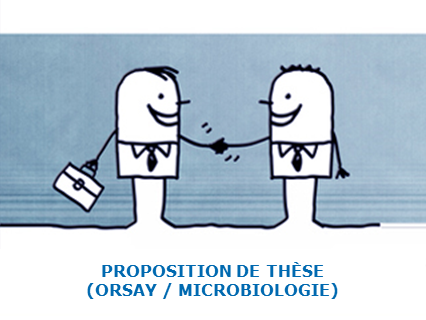

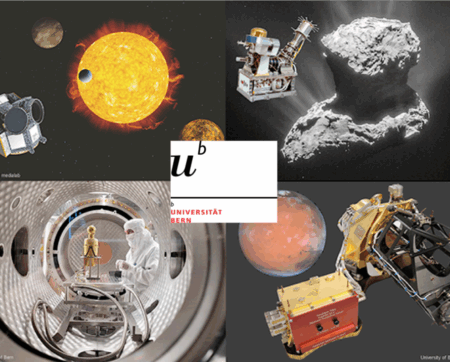
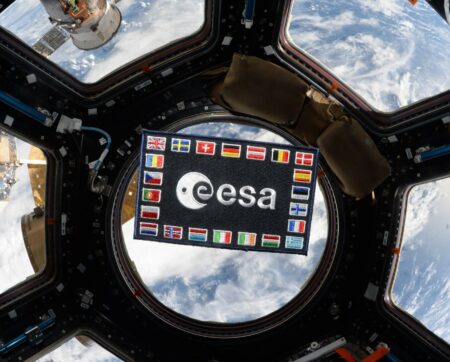
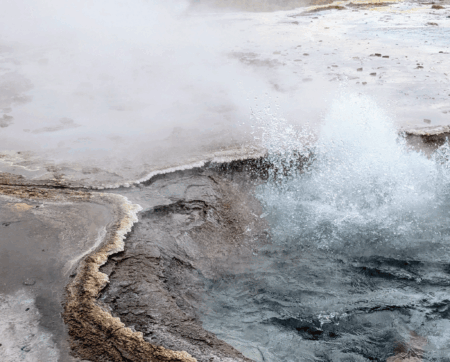
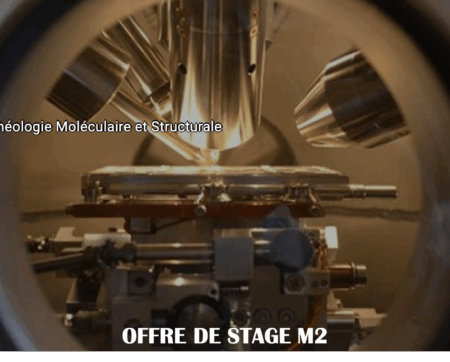
Aucun commentaire sur l'article Offre de thèse sur les extrêmophiles au laboratoire Unité Ecologie Systématique Evolution à Orsay